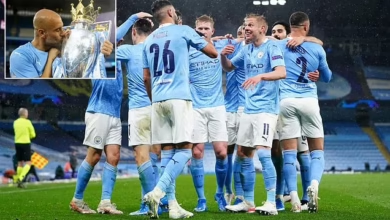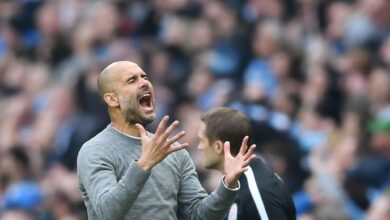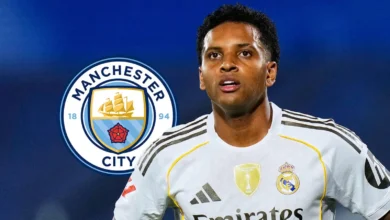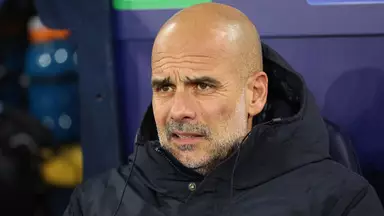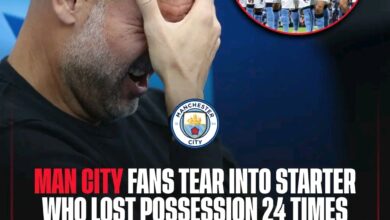Harvey Elliott’s Liverpool Future: Transfer Possibilities Emerge Amid Injury Concerns Elsewhere

As the Premier League prepares for another captivating season, Liverpool’s young midfielder Harvey Elliott finds himself at a crossroads that could define the trajectory of his promising career. The 21-year-old England youth international has become the subject of intense transfer speculation, with his future at Anfield appearing increasingly uncertain following a season of limited opportunities under new management.
Elliott’s situation has taken on added complexity in recent weeks, particularly as potential suitors face their own personnel challenges. The interconnected nature of the modern transfer market means that one club’s misfortune can quickly become another’s opportunity, and this dynamic appears to be playing out in real-time with Elliott at the center of the narrative.
The young midfielder’s journey from academy prospect to first-team regular has been nothing short of remarkable, yet questions now surround whether his long-term future lies on Merseyside or whether a fresh challenge elsewhere might better serve his developmental needs and career ambitions.
Harvey Elliott’s rise through Liverpool’s ranks represents one of the club’s most successful youth development stories in recent years. Since making his breakthrough into the first team, the versatile midfielder has demonstrated technical ability, vision, and maturity beyond his years. His performances during the 2023-24 season, while limited in quantity, showcased glimpses of the player many believe he can become.
However, the arrival of new management and tactical adjustments have seemingly impacted Elliott’s role within the squad structure. Under the previous regime, the young midfielder had carved out a specific niche, contributing valuable minutes across multiple competitions. The transition to a new tactical system has proven challenging for several players, with Elliott among those who have found opportunities more difficult to come by.
The statistics paint a picture of a player whose involvement has diminished despite his obvious talent. With just 822 minutes across 28 appearances last season, Elliott’s playing time represented a significant reduction from previous campaigns. This limited exposure has raised questions about his long-term prospects at the club and whether a move elsewhere might provide the regular football essential for his continued development.
His contribution of five goals and three assists across all competitions, while respectable given his limited minutes, suggests a player capable of much more when given consistent opportunities. The challenge for Elliott has been translating his undeniable potential into sustained first-team football at one of Europe’s most demanding clubs.
While Elliott’s club situation has presented challenges, his performances on the international stage have provided a timely reminder of his considerable abilities. His outstanding displays for England at the Under-21 European Championships served as a catalyst for renewed interest from potential suitors and demonstrated his capacity to perform at the highest level when given the opportunity.
Being named player of the tournament represented a significant achievement and validation of his talent on a stage where many of Europe’s most promising young players compete. This recognition has undoubtedly enhanced his profile and market value, making him an attractive proposition for clubs seeking creative midfield options.
The contrast between his international success and limited club opportunities has created an interesting dynamic. While thriving in an England shirt, Elliott has found himself on the periphery at Liverpool, highlighting the competitive nature of top-level football and the challenges faced by young players seeking to establish themselves at elite clubs.
His tournament performances showcased the full range of his abilities: technical proficiency, creativity, work rate, and leadership qualities that belie his age. These displays have likely strengthened his negotiating position, whether in discussions about his Liverpool future or potential moves elsewhere.
The modern transfer market operates as an intricate web of interconnected moves, where one club’s needs can quickly create opportunities elsewhere. This principle appears particularly relevant to Elliott’s situation, as potential suitors face their own challenges that could influence their pursuit of the Liverpool midfielder.
Tottenham Hotspur’s interest in Elliott has been well-documented, with the North London club reportedly monitoring his situation closely. However, their own squad management challenges, including injury concerns and tactical adjustments under their management, have created uncertainty about their ability to provide the regular football Elliott seeks.
The competition for attacking midfield positions across the Premier League has intensified significantly, with clubs increasingly prioritizing versatile players capable of operating in multiple roles. Elliott’s ability to function as both a traditional midfielder and in more advanced positions makes him an attractive proposition for clubs seeking tactical flexibility. Market valuations for young English talent continue to escalate, driven by homegrown player requirements and the premium placed on promising domestic prospects. Elliott’s age profile, combined with his Premier League experience and international recognition, positions him as a valuable asset in an inflated market.
One of the most significant factors in Elliott’s reduced role has been the tactical evolution at Liverpool. New management often brings different philosophical approaches and system requirements, which can favor certain player profiles while disadvantaging others. Elliott’s skill set, while undeniably impressive, may not align perfectly with the current tactical blueprint.
The modern game’s increasing emphasis on physicality, pressing intensity, and positional discipline has created challenges for technically gifted players who may not possess all the attributes demanded by contemporary systems. Elliott’s strengths lie in his creativity, passing range, and ability to find space, qualities that require specific tactical frameworks to flourish.
His versatility, traditionally viewed as an asset, might paradoxically work against him in systems that demand specialists for each position. Managers increasingly prefer players who excel in specific roles rather than those who can perform adequately across multiple positions. This shift in philosophy could explain Elliott’s reduced involvement despite his obvious talent.
The challenge for any potential move would be finding a club whose tactical approach maximizes Elliott’s strengths while minimizing his perceived weaknesses. This alignment between player attributes and system requirements often determines the success or failure of transfers, particularly for young players still developing their professional identity.
The financial aspects of any potential Elliott transfer would be complex, involving multiple considerations beyond simple transfer fees. Liverpool’s investment in his development, combined with his contract situation and market value, creates a multifaceted valuation scenario that would influence any negotiations.
Young English players command premium valuations in the current market, driven by homegrown player regulations and the scarcity of quality domestic talent. Elliott’s profile fits perfectly into this category, suggesting any potential transfer would involve significant financial commitment from interested parties.
The timing of any move would be crucial from a financial perspective. Players entering the final years of their contracts often see their market value fluctuate based on their willingness to extend or their desire to move. Elliott’s situation in this regard could influence both Liverpool’s negotiating position and potential suitors’ strategies.
From Liverpool’s perspective, any decision to sell would need to balance immediate financial return against long-term potential loss. The club’s history with young player development suggests they would be reluctant to release a talent of Elliott’s caliber without significant compensation or compelling sporting reasons.
Liverpool’s squad depth in midfield positions has increased significantly, creating heightened competition for playing time. The arrival of new signings and the continued presence of established internationals has made Elliott’s path to regular football increasingly challenging.
Squad rotation policies, while beneficial for managing player workloads across long seasons, can be detrimental to young players requiring consistent game time for development. Elliott’s situation exemplifies this tension between squad management needs and individual player development requirements.
The psychological impact of reduced playing time on young players cannot be underestimated. Confidence, rhythm, and development trajectory can all be affected by extended periods without regular football. For Elliott, this reality may influence his decision-making regarding his future.
Competition from both established stars and fellow young prospects creates a complex dynamic within the squad. While healthy competition can drive standards higher, it can also limit opportunities for individual players to establish themselves and develop consistency in their performances.
Several clubs have been linked with moves for Elliott, each offering different advantages and challenges. The decision-making process for any young player involves weighing immediate opportunities against long-term career development prospects.
Premier League clubs offer the advantage of familiar surroundings and continued exposure to the highest level of English football. However, they may also present similar challenges regarding competition for places and tactical fit that Elliott currently faces at Liverpool.
European opportunities could provide different experiences and development pathways, though they would involve adapting to new leagues, cultures, and playing styles. The choice between domestic and international moves often reflects a player’s personal preferences and career ambitions.
The reputation and track record of potential suitors in developing young talent becomes a crucial consideration. Clubs with strong histories of nurturing promising players and providing pathways to first-team football would naturally be more attractive to Elliott and his representatives.
The structure of any potential move presents another layer of complexity in Elliott’s situation. Loan arrangements offer opportunities for regular football while maintaining connections to parent clubs, but they also create uncertainty about long-term futures.
Permanent transfers provide clarity and commitment but require greater confidence in the suitability of the destination. For Elliott, the choice between temporary and permanent moves would depend on various factors including his assessment of his Liverpool prospects and the quality of opportunities elsewhere.
Liverpool’s perspective on loan versus sale decisions would be influenced by their long-term planning and assessment of Elliott’s potential contribution to their squad. The club’s historical approach to player development suggests they would carefully consider all options before making final decisions.
The timing of any move, whether loan or permanent, would be crucial given Elliott’s age and career stage. Critical development years require careful management to ensure players receive appropriate challenges and opportunities to progress their careers.
The managerial viewpoint represents a crucial element in Elliott’s situation, as coaching staff ultimately determine playing opportunities and squad roles. Understanding the tactical vision and player preferences of current management provides insight into Elliott’s potential future role.
Different managers prioritize different attributes and playing styles, which can dramatically affect individual players’ prospects within squads. Elliott’s challenge has been adapting to new tactical demands while maintaining the qualities that initially earned him recognition.
The relationship between player and manager often determines success or failure at the highest level. Clear communication about roles, expectations, and development pathways can help young players navigate challenging periods in their careers.
Managerial changes, while disruptive in the short term, can also create new opportunities for players who may have fallen out of favor under previous regimes. Elliott’s situation demonstrates how tactical evolution can affect individual career trajectories
At 21, Elliott finds himself at a critical juncture in his professional development. The decisions made in the coming months could significantly influence the trajectory of his career and his ultimate achievement of his potential.
Regular first-team football is widely recognized as essential for young player development, particularly during the transition from promising prospect to established professional. Elliott’s challenge is securing this regular exposure while maintaining his upward career trajectory.
The balance between patience and ambition represents a key consideration for young players in Elliott’s position. While loyalty to development clubs is admirable, career progression sometimes requires difficult decisions about seeking opportunities elsewhere.
Professional guidance from agents, family, and mentors becomes crucial during such decision-making periods. The complexity of modern football careers requires expertise in navigating both sporting and commercial considerations that influence long-term success.
Harvey Elliott’s situation encapsulates the challenges facing many promising young players in modern football’s competitive environment. While his talent is undeniable, translating that ability into consistent first-team opportunities has proven challenging within Liverpool’s current structure.
The interconnected nature of the transfer market means that developments elsewhere could create opportunities for Elliott to secure the regular football essential for his continued development. Whether through loan moves, permanent transfers, or renewed opportunities at Liverpool, his immediate future remains subject to various external factors.
What remains clear is Elliott’s potential to become a significant player at the highest level of the game. His international recognition, technical abilities, and professional attitude suggest that, regardless of where his career path leads, he possesses the foundation necessary for long-term success.
The coming weeks will likely prove decisive in determining Elliott’s next career chapter. Whether that involves fighting for his place at Liverpool, seeking opportunities elsewhere, or exploring temporary moves to gain experience, his decisions will significantly influence his development trajectory.
For Liverpool, managing Elliott’s situation represents a broader challenge of balancing squad depth with individual player development needs. The club’s approach to his case may set precedents for how they handle similar situations with other promising young talents in their system.
Ultimately, Elliott’s story serves as a reminder of the complexity inherent in modern football careers, where talent alone is insufficient to guarantee success. The combination of ability, opportunity, timing, and decision-making ultimately determines whether promising prospects fulfill their potential at the highest level of the game.







